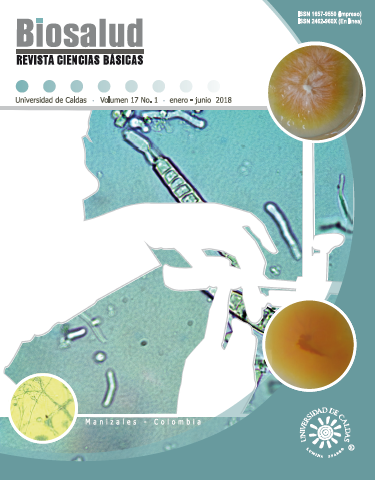Authors
Abstract
The hemothorax is defined as the presence of a collection of blood in the pleural space. The objective of this research was to determine if conservative nonsurgical management of traumatic hemothorax is safe. A descriptive and prospective study of a cohort of patients admitted with a diagnosis of chest trauma complicated with hemothorax was carried out from January 2013 to December 2016, in the Thorax Surgery Unit at the Hospital Dr. Adolfo Pons of the Instituto Venezolano de los Seguros Sociales (IVSS) in Maracaibo, Venezuela. A total of 150 patients were evaluated, the mean age was 30.9 years (range 24-65 years), with a predominance in males 85.2%. In most cases, the thoracic trauma was non-penetrating (60%), and the most frequent cause was bullet wounds (48%), car accident (26.6%), and bladed weapon wounds (25.3%). The right hemithorax was the most affected (53.3%). The volume of drained blood was classified in mild (25.3%), moderate (70.6%) and massive (3.9%). The treatment carried out in the first intention, in the 80% of the cases, was closed thoracostomy with a pleural catheter (24 Fr). However, in 13.3% of patients, it was necessary to perform open surgery on the pleural space (exploratory thoracostomy). The evolution of the patients was satisfactory in a 100% of the cases. Conclusion: The closed thoracostomy with pleural catheter plays a basic role in the initial nonsurgical treatment, being a safe, conservative procedure in these patients. However, the patient clinical condition should be taken into account to decrease complications and associated deaths.
References
2. Mattox KL, Matthew JW, Tsai P. Trauma thoracotomy: principles and techniques. En: Mattox KL, Moore EE, Feliciano DV, editors. Trauma. 7th ed. United States: McGraw-Hill; 2013.
3. Cothren CC, Biffl WL, Moore EE. Traumatismos. En: Brunicardi FC, Andersen DK, Billiar TR, et al., editores. Principios de cirugía. 9a ed. México: McGraw-Hill; 2011.
4. Díaz-Rosales J, Enríquez-Domínguez L. Procedimiento en cirugía: toracostomía cerrada. Rev. Fac. Med. 2010;58(4):331-340.
5. Menger R, Telford G, Kim P, Bergey MR, Foreman J, Sarani B, et al. Complications following thoracic trauma managed with tube thoracostomy. Injury. 2012;43(1):46-50.
6. González C, Labastida C, Noboa F, Plata J, Hernández N, Castillo V. Hallazgos en Toracotomía de Urgencia en Pacientes con Trauma Torácico en el Hospital Universitario de Los Andes. Informe Médico.
7. Hernández LA, Ruiz GJ, Escamilla AC. Epidemiología del trauma. En: Morales JL, editor. Tratado de cirugía general. 2a ed. México: El Manual Moderno; 2008. p. 1047-10.
8. Bello N. Bórquez P, Guridi R, Baeza A, Lilayú D. Perfil y manejo del trauma torácico en un hospital regional. Revista Chilena de Cirugía. 2005;57(4):393-396.
9. Valenzuela M, Cancino P, Cabezas F, Donoso G, De la Torre I. Experiencia en traumatismo torácico. Hospital Valparaíso. Revista Chilena de Cirugía. 2003;55(5):449-453.
10. Bozza V, Monroy G, Santelli C, Andríollo A. Traumatismo torácico: revisión de 97 casos Hospital Periférico de Coche. Rev. Soc. Med. Quir. Hosp. Emerg. Pérez de León. 1998;29(1):117-40 Camargo H, Sarmiento D, Herazo
11. T, Bracamonte M, Chávez M. Traumatismo torácico: causas y complicaciones en el I.V.S.S. – Hospital “Dr. Rafael Calles Sierra”. Revista venezolana. 2000;17-24.
12. Ávila RJ, Hernández A, Marrón C, Hermoso F, Martínez I, Mariscal A, et al. Evolución y complicaciones del traumatismo torácico. Arch Bronconeumol. 2013;49(5):177-180.
13. Acosta D. Criterios para decidir el tratamiento conservador o quirúrgico del trauma torácico [Trabajo Especial de Grado]. Maracaibo: La Universidad del Zulia; 2010.
14. Undurraga F, Rodríguez P, Lazo D. Trauma de tórax. Rev. Méd Clín. Condes. 2011;22(5):617-622.
15. Jiménez-Fernández CA, Bautista-González S, Guzmán-Chávez OR, Soto-Vargas J, Preciado-Amador N, Rostro-Rivera R, et al. Trauma de tórax. Experiencia de un año en el Hospital de tercer nivel Hospital Civil Fray Antonio Alcalde. Rev. Méd. 2012;3(4):186-190.
16. Jana BM, Jeffrey S, Joseph TK, Fran L, Grace S, Rozycki D. The Epidemiology of Traumatic Hemothorax in a Level I Trauma Center: Case for Early Video-assisted Thoracoscopic Surgery. Journal of the Royal Army Medical Corps. 2010;156(1):5-14.
17. Balkan ME, Oktar GL, Kayi Cangir A, Ergul EG. Emergency thoracotomy for blunt thoracic trauma. Ann Thorac Cardiovasc Surg. 2002;8(2):78-82.

 PDF (Español)
PDF (Español)
 FLIP
FLIP


















